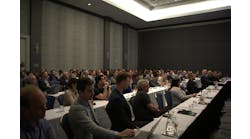By Elisa Wood
January 14, 2010
In his best seller “Outliers,” Malcolm Gladwell shows that it is not equipment failure or storms that typically cause planes to crash, but wrong decision-making. Much the same can be said for the power grid crash that took down a large swath of the Northeast in August 2003.
The emerging smart grid is supposed to make our power system more reliable. The bad news is that it also will add complexity to North America’s already byzantine power machine. So smart grid will only be as smart as the people who operate it.
The solution seems obvious: job training. But to hear Matt Sadinsky tell it, it’s not that simple. And he should know.
Sadinsky’s company, System Operations Success International www.sosintl.com, develops computer simulation and training programs to help workers operate the bulk power grid within standards set by the North American Reliability Council. The North Carolina company has provided NERC approved continuing education to thousands of engineers and grid professionals in the United States and Canada since 2002.
Operating the electric grid is not matter of flipping pages in a manual. Given the rapid and complex turn of events that can occur on the system, operators need gut understanding, according to Sadinsky. These are already very smart people. But how do you train old dogs new tricks, so that they can gain the same gut understanding of the latest rules and technologies? And how do you help them teach the pups?
Gladwell in his book says typically it requires at least 10,000 hours on the job to attain a proficiency that brings success. The utility industry, unfortunately, tends to rely on what Sadinsky calls “tribal learning,” a very slow process that can stretch training out far longer. Sadinksy describes it as the “some-guy-named-Joe-taught-me-everything-I-know” approach. After years of operating the system alongside Joe and experiencing various emergencies, the student gains the same gut instinct as the mentor.
However, utility tribal leaders are getting ready to retire in mass numbers and may leave before newcomers have their 10,000 hours or more of training. So SOS Intl has figured out a way to hasten the learning process, using a medium the up-and-coming generation can appreciate – electronic games. Through computer simulation the trainee gets hands on experiences in grid events and emergencies that it may take years to witness in real time. Rather than tribal learning, this system uses what Sadinsky describes as more rapid-fire “Huh?” and “Oh…” cognition (or in Canada “Eh?” and “Oh…”) The student has a chance to see the problem, test choices, and grasp the solution in the virtual learning-by-doing setting – without any real world crashes.
SOS Intl wants to bring this gaming method to the emerging smart grid. Thus, the company has applied for a $4.7 million federal stimulus grant with several partners — among them the University of California Los Angeles; George Mason University’s Center for Smart Power Grids; City of Burbank, California Department of Water and Power; Cleveland Public Power and the Southern California Public Power Authority.
They will use the money to study development of what they are calling Smart Grid — the Game. The simulated program will help operators learn how to handle issues involving solar and wind integration, storage, grid additions of plug-in electric vehicles, and other aspects of smart grid.
This project was proposed under the Smart Grid Workforce Training segment of the US Department of Energy Workforce Training for the Electric Power Sector Grant. Sadinsky expects to hear by January 31 if they won funding. Stay tuned to see whether or not the proposal creates a “Huh?” and “Oh…” for the DOE grant evaluators.
Visit Elisa Wood at http://www.realenergywriters.com/ and pick up her free Energy Efficiency Markets podcast and newsletter.





